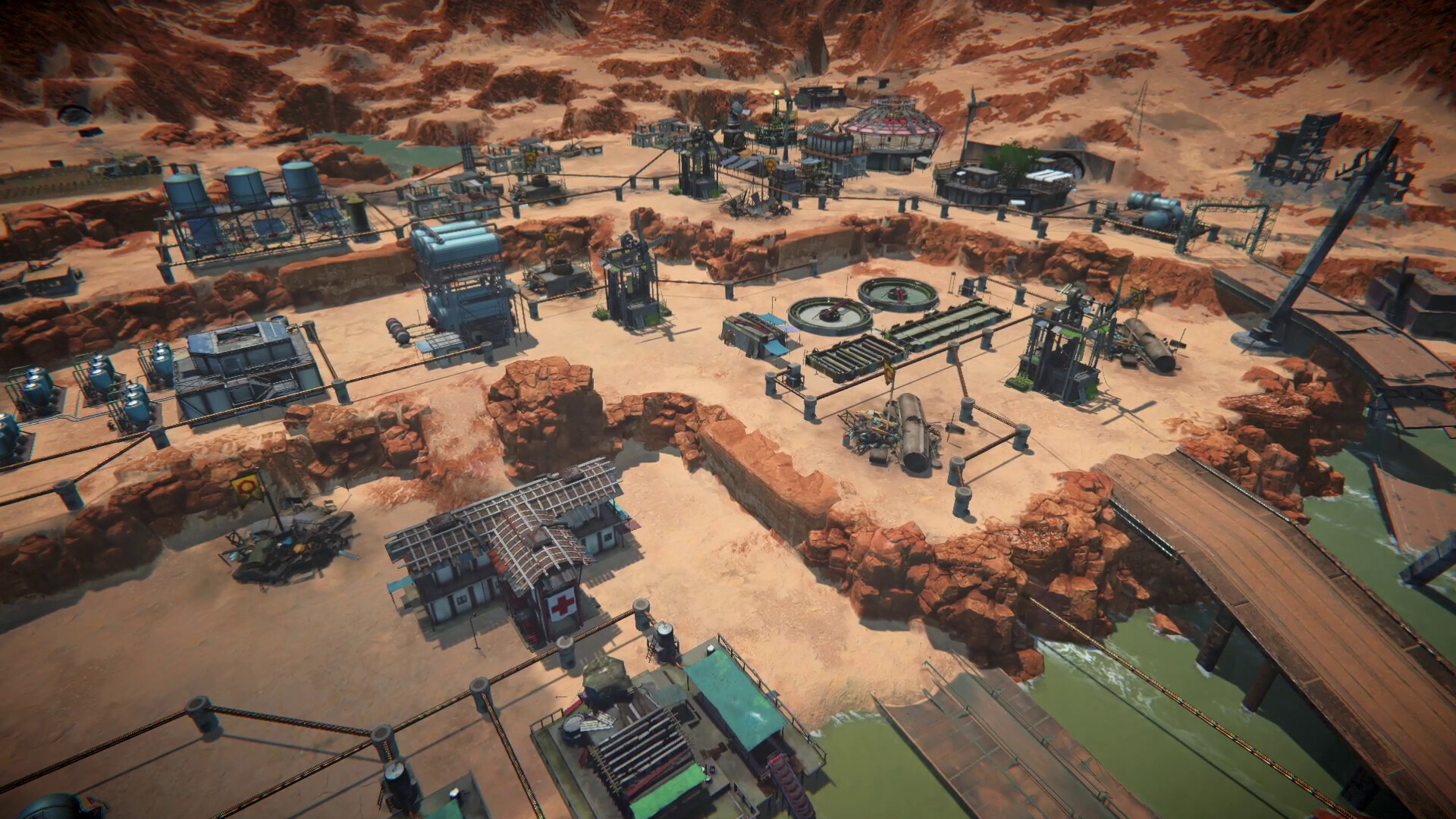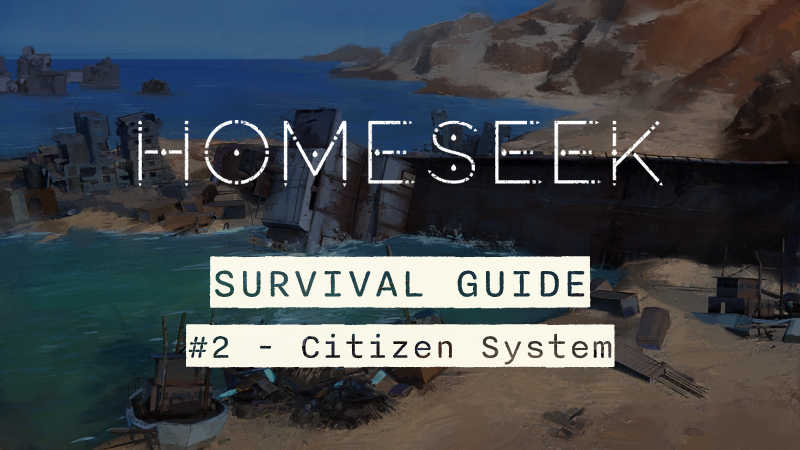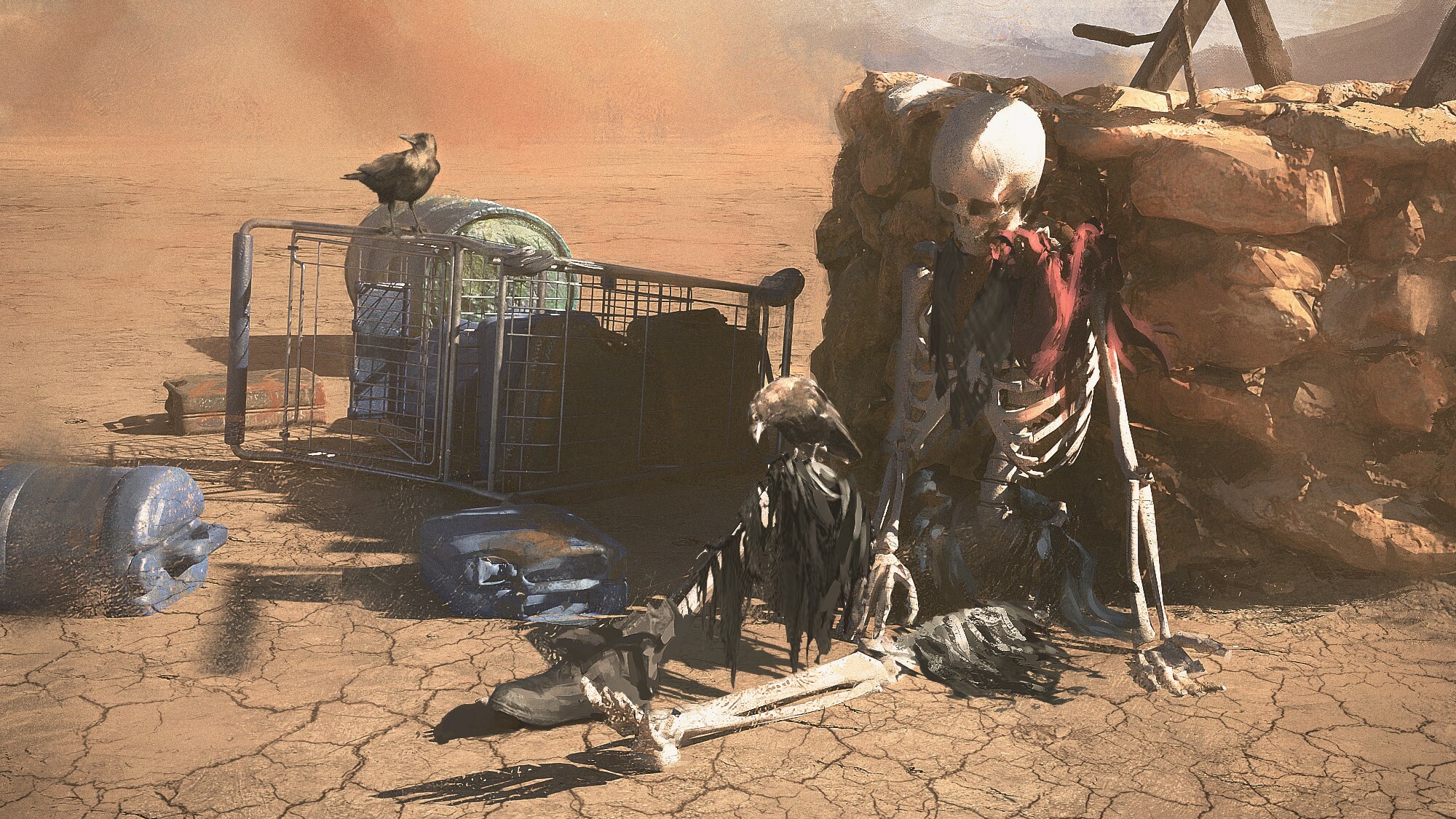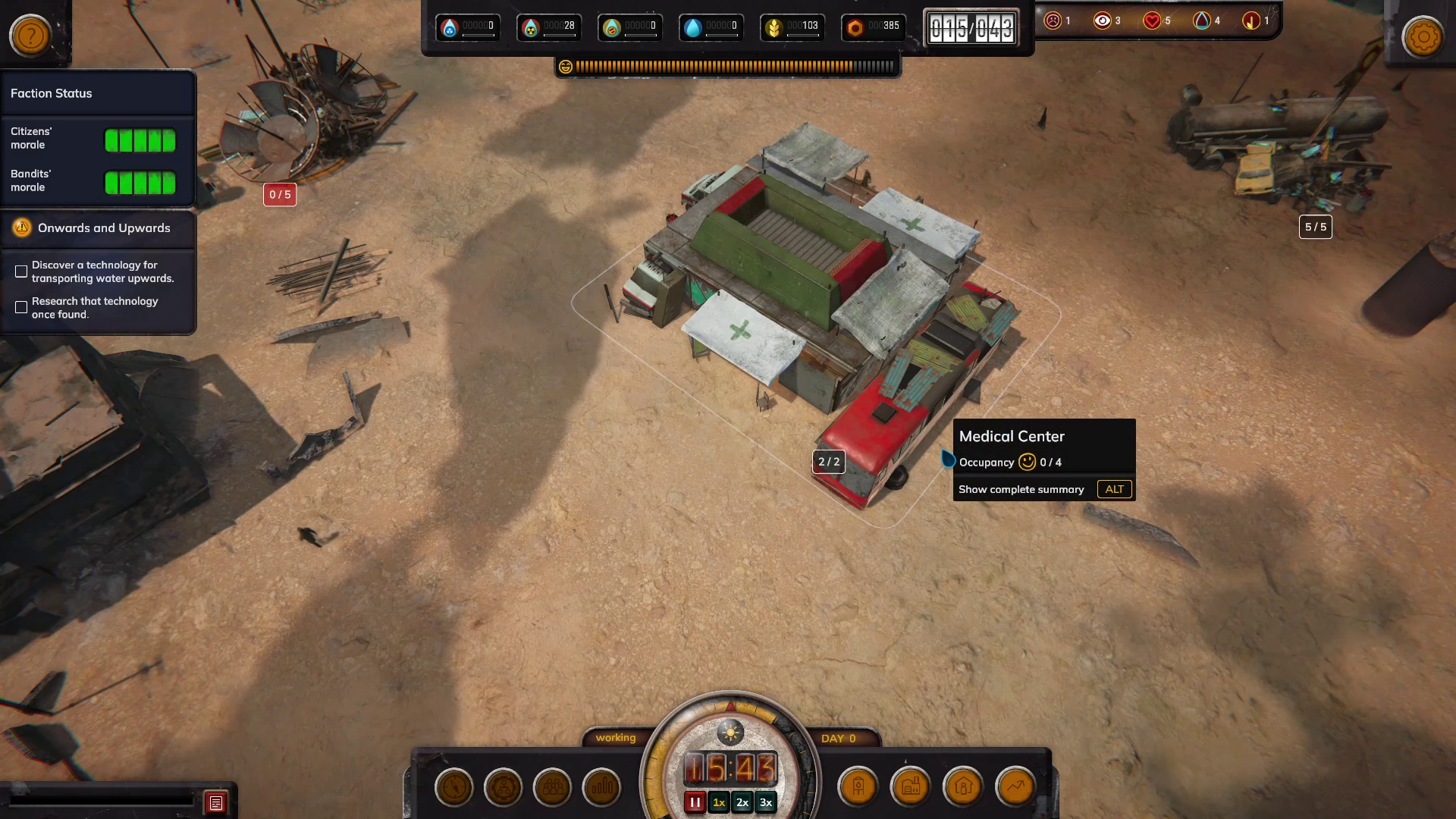
[previewyoutube][/previewyoutube]
In
Homeseek, city-building is just as important as in all strategy games, but there are a few differences you should bear in mind.
For instance, most buildings that produce or consume some kind of resource have to be connected with other buildings.
Let’s examine the Water Extractor for example. Once selected, you can place it over any well within your settlement. You will also need a Water Storage to store the water it collects.

Once your Water Extractor is constructed, you’ll see there’s a warning to tell you there are not enough connections for the building to function properly. To fix this, select your Water Extractor, head over to the second tab, and create a new connection by clicking on the +.
After selecting the building you want to connect with, there will be a confirmation pop-up. In this pop up, you can modify how much scrap you want to spend for a better connection quality.
The worse the type of connection, the more water is lost before it reaches storage. The distance between the connected buildings plays a factor in that as well.
By the way, you don’t have to wait for construction to end to form your connections!

Now, let’s get a little more technical by examining the Wetlands, a building that improves the water quality from contaminated to just poor.
Once the Wetlands are constructed, you can connect the Water Storage you built as an incoming connection.

Once again, you’ll get a helpful warning that the Wetlands does not have enough connections, and that’s because the improved water has no place to go. You’ll need to build and connect a new Water Storage as an outgoing connection to store the cleaner water. To do so, simply select Water Storage, build it, and form a new connection just like before.
Now, the older storage will store contaminated water while the new one is being filled with poor quality water.

Now that the water connections are in place, it’s a good idea to start work on getting food.
Food connections have a hard limit visualized by a circular area. Connections outside that area are not possible at all, but as long as they are within the circle, the distance between buildings that use food has no impact on their efficiency.

Finally, let’s build a Farm. Farms convert water to food over time.
Once you’ve selected and placed your Farm, you’ll need to select a water input. You can select either Water Storage from before. Your output connection should be linked to a Food Storage, since your Farm is going to turn all that incoming water into food for your settlement.
Selecting the Water Storage with poor water—which is the highest quality you have right now if you followed the above steps—will result in better conversion as well as food with a smaller contamination percentage.

And now you have a fully functional settlement covering the production of both food and water!





















